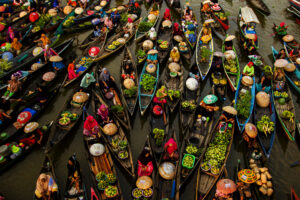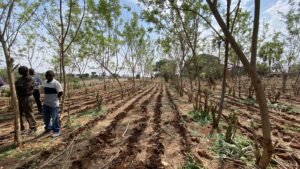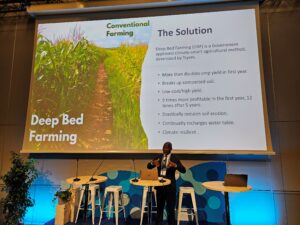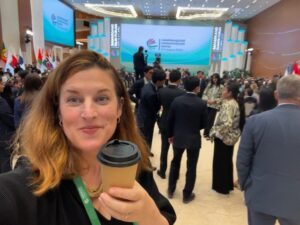Food is a major water challenge
Interest is growing in the water aspect of food. Not so surprisingly, since we have some game-changing years ahead of us. By 2050, the world must feed two billion more mouths, but will there be enough water to produce all that food?

There is a lot of talk about food right now. This week in Stockholm, the EAT Forum (12-13 June) will address some of the main challenges linked to the much needed global food transformation, building on from the influential EAT-Lancet report published earlier this year. The report clearly demonstrates how the planet needs a healthier diet, with less consumption of sugar and red meat.
Next week, at the UNFCCC Bonn Climate Conference (SB50, starting 17 June), decision-makers and experts will discuss energy and food. With the global population expected to reach almost 10 billion by 2050, demand for both will continue to grow in a way that can contribute to further global warming and will place additional pressure on natural resources. But there are also promising solutions, some of which SIWI will present at the conference.
Food simply is one of the most important water challenges. First, agriculture already consumes 70 per cent of water withdrawals. Interest in that sector will therefore increase when we’re heading for an era of worsening water scarcity. By 2030, half the global population will live in water scarce areas and global demand for freshwater will exceed sustainable supply by 40 per cent.
Second, in many places, food production will become more difficult in coming years. One reason is growing competition over water when populations continue to grow. Another driver is urbanization, which often means that cities expand and gobble up land that could otherwise have been used for agriculture. A third factor is the climate crisis, making extreme weather events more frequent and severe. Farmers will be hit not only by disasters such as floods and droughts, but increasingly unpredictable rainfall patterns can also cause crop failure and jeopardize food security.
SIWI is therefore working actively on solutions to make agriculture more sustainable. One promising route is further investments in rainfed agriculture. This is crucial not least in sub-Saharan Africa, which is one of the driest on Earth, with highly valuable rainfall. In coming years, rainfall variability and evapotranspiration are expected to increase, at the same time as the population will grow. To ensure food security, massive investments are needed in rainfed agriculture. Through the Transforming Investments in African Rainfed Agriculture (TIARA) project, SIWI and partners seek to raise awareness of this opportunity.
Another important topic is what kind of food should be produced. SIWI’s Senior Advisor, Professor Jan Lundqvist, is a world-leading expert on how to shift to more nutritious diets while minimizing the amount of water used in production. Focus must not only be on people having enough food but also on nutrition. In this blog post he draws our attention to that fact that the World Health Organization, WHO, estimates that over 2,000 million people are affected by micro-nutrient deficiencies (essential vitamins and minerals), which is more than twice the number of people who are suffering from too little food.
We therefore need new, more sustainable food systems and consumption patterns. Over the past 50 years the world has made a remarkable shift in food consumption, in the process making food production much more water-guzzling. Average food supply, i.e. what is available on the market, has increased by about 30 per cent per capita over a fifty-year period, from the beginning of the 1960s to 2011, parallel with a global population increase from about 3 to 7. 5 billion. Never before have so many been exposed to such an abundance in food supply, from all parts of the world, at all time, as Professor Lundqvist notes in a blog post.
To reverse the trend of increasingly water-intense diets, a first step is to become aware of how much water is needed to produce different kinds of food. A bar of chocolate, for example, requires 1,400 litres of water and a kilo of beef 15,000. Since the concept of water footprints was developed by Arjen Hoekstra in 2003 it has become a widely used framework to analyze the link between human consumption and the appropriation of the globe’s freshwater. SIWI also works with the private sector to make companies more aware of how they can reduce their water footprints and ensure that their production doesn’t jeopardize water security for local populations. Water aspects must be at the top of the corporate agenda.
Clearly, there is growing interest in water and food, but we have a huge task ahead of us to make this complex topic more widely understood – and acted upon. In the policy brief Nine billion consumers and the water crises, SIWI puts forth suggestions to achieve this important transition. We need to talk a lot more about food.







